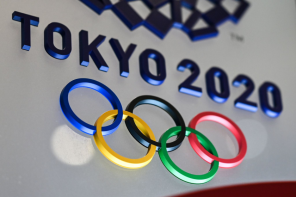A central appeal of the Olympics for both athletes and fans alike is the debut of bright young talents on a global stage. In sports, one of the great currencies in which we deal is the idea of potential, which is almost always tied to youth. When an older athlete is already at their peak, we can only project how long they will compete at their current level before they begin to decline, but when a young athlete shows signs of emerging greatness and ability, one can estimate exponential gains of improvement. The thin line between derision or darling-hood that an athlete walks in the eyes of the public often borders these two perceptions. The best and most beloved athletes are able to simultaneously inspire and create an image of future achievement in the mind of the viewer, while continuously validating those visions with otherworldly performances that push that envelope further.
The thin line between derision or darling-hood that an athlete walks in the eyes of the public often borders these two perceptions.
Newly introduced onto this frontier of expectations is 21-year old breakout track star Sha’Carri Richardson, who dropped jaws at the Miramar Invitational by posting a 10.72 time in the 100-meter dash. This accomplishment placed her in the company of multiple-time medalist women’s sprinters as the sixth fastest woman to ever run the event. Richardson’s recognizable aesthetic, unquestionable ability, and grounded, articulate interviews in the wake of her biological mother’s death make her a captivating young figure. She has caught the attention and genuine affection of millions. Yet, within two weeks of her meteoric ascension, Sha’Carri has seen a drastic shift in her public perception. After testing positive for THC from usage in the days before the race, Richardson was suspended for a month from international competition. While sports drugs suspensions can often last much longer and be much more severe, the timing still makes it impossible for Richardson to compete in the Olympic 100m dash. She was also excluded from Team USA’s relay roster despite that event taking place outside of her suspension window, ensuring she will not participate at this year’s Olympics.
Richardson has taken responsibility for misstepping, stating in an interview with Today News that “I know what I did, I know what I’m supposed to do… and I still made that decision.” Still, the incident has placed the young phenom squarely in the crosshairs of a still-contentious debate among sports observers and the general public about the ethics of recreational drug use. What’s more, the debacle has given fuel to those who would take the opportunity to engage in public shaming, whom Richardson has often dismissively referred to as “the haters.”
I know what I did, I know what I’m supposed to do… and I still made that decision.
Of course, Richardson is certainly not without her share of supporters. After the news of her suspension was made public, several athletes across the realm of sports, as well as some politicians, weighed in with their support for Sha’Carri. The case has re-opened a decades-old conversation about the purpose and nature of anti-doping laws in athletics, and it has prompted widespread consideration of the ways in which those laws can potentially bring about severe negative consequences for athletes. The World Anti-Doping Agency (WADA), which provides the basic template for all anti-doping agencies internationally, prohibits marijuana usage during competition. The USADA identifies three criteria for inclusion on the banned substances list; potential health risk, performance-enhancing capabilities, and being against the “spirit of the sport.” In their research article on cannabinoids, the WADA argues that any form of cannabinoid apart from cannabidiol, or CBD, falls under all three of these criteria.
While all three of these criteria can be argued, the most contentious claim is certainly the status of cannabinoids as performance-enhancers. According to the WADA, the anxiety-reducing and memory-altering effects of cannabis can be considered performance-enhancing, despite a lack of evidence of any actual physical benefit to consumption, besides increased oxygenation through relaxation of muscles in the lungs and the blood vessels. In contrast, a good deal of evidence points to negative effects in terms of actual performance. The WADA argues that in sports that require a great degree of concentration, the reduction in anxiety and inhibition offered by these drugs could be beneficial.
While this has been the way that the rule has been written and applied since 2011, seeing the effects of the ban in the first Olympics since the pandemic has re-kindled this debate. Loosely applied criteria like ‘performance-enhancing’ or ‘spirit of sport’ lend credence to those who would question the objectivity with which such decisions are made, as well as what other factors might play a role in these rulings.
Despite this major setback, it is unlikely that this is the last we will see or hear of Sha’Carri Richardson. She is still the fastest woman in the United States by a significant margin, and she will most likely be able to serve her suspension and begin representing Team USA at the next possible event. This incident will likely at some point become a small note in the story of her career, but it will continue to be a present reality of the world of professional athletic competition that Sha’Carri, as well as millions of athletes around the world, must continue to navigate.








